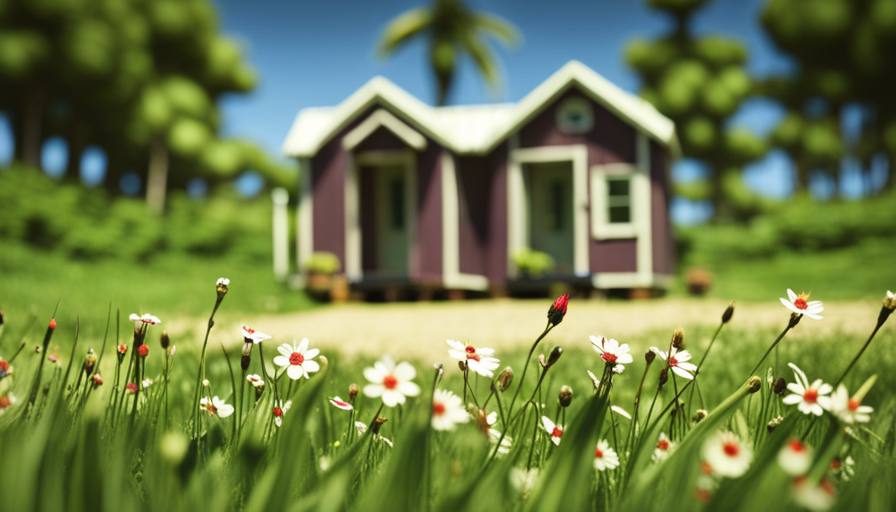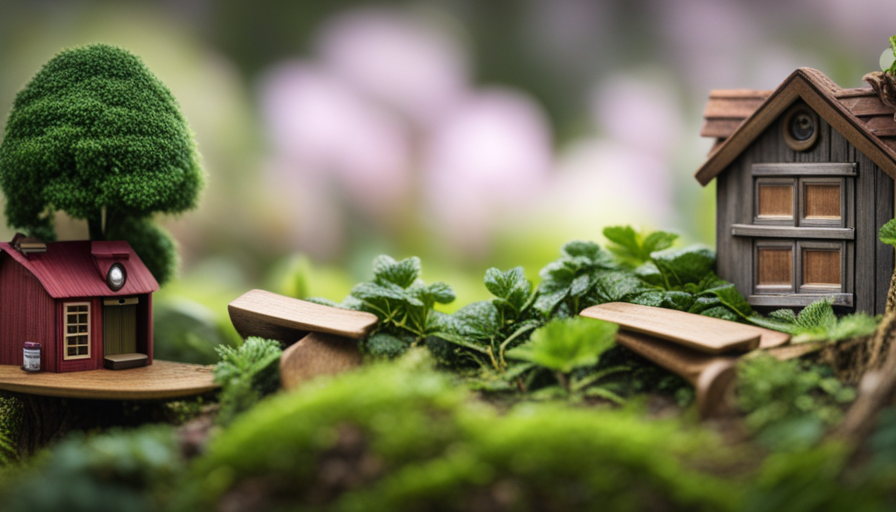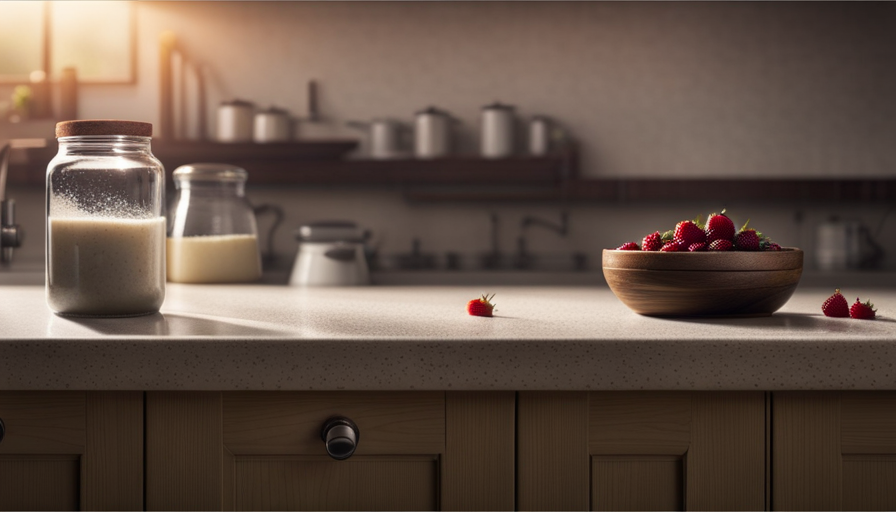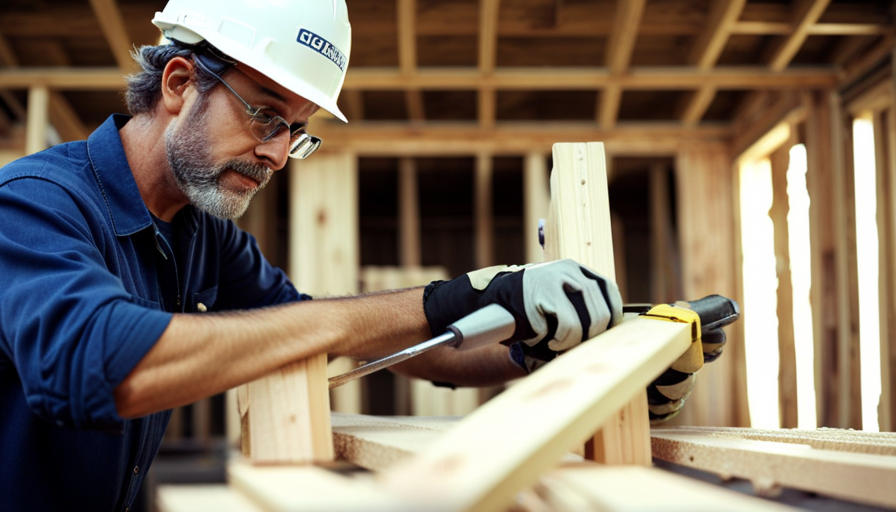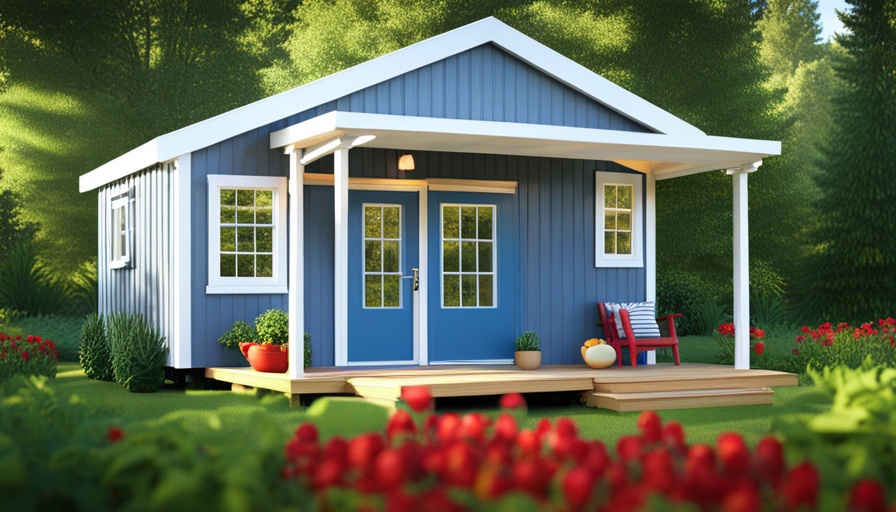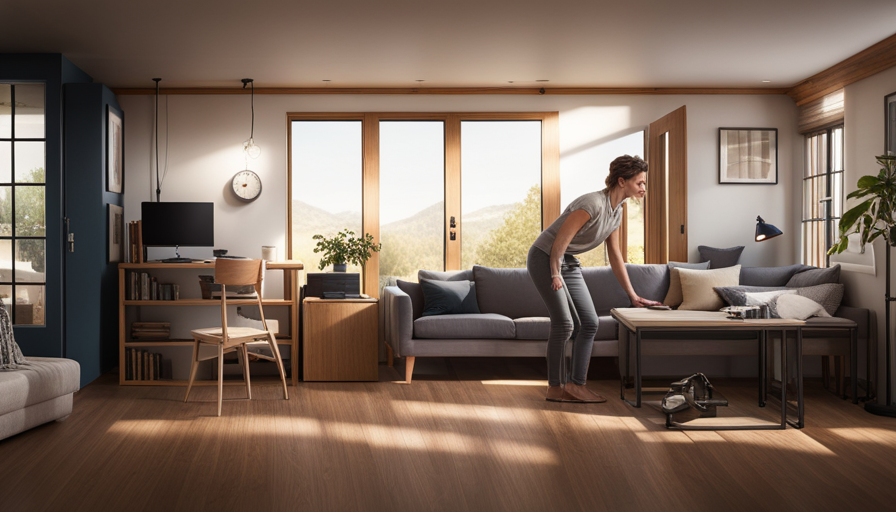Have you ever experienced the sensation of being overwhelmed by too much stuff, as if you’re suffocating under the burden of your belongings? I certainly have. It’s a state that can engulf you, making you crave a simpler, freer existence. This is precisely why the tiny house movement has attracted the attention and affection of numerous people looking for an alternative lifestyle.
But before you dive headfirst into this intriguing world, it’s important to ask yourself one crucial question: how much is a tiny house? In this article, we will explore the factors that affect the cost of a tiny house, the different types of tiny houses and their price range, financing options available, and the benefits and drawbacks of living in a tiny house.
By the end, you’ll have a better understanding of the financial implications and considerations involved in embarking on this minimalist journey. So, let’s chart a course towards a simpler, more affordable way of living.
Key Takeaways
- The cost of a tiny house can vary depending on factors such as size, location, materials, customization options, and craftsmanship.
- Different types of tiny houses include those on wheels, container homes, and houses built on foundations, each with their own price ranges.
- Hidden costs to consider when purchasing a tiny house include land, customization, utilities, and storage.
- Financing options for tiny houses include tiny house financing, personal loans, crowdfunding, and using savings.
Factors that Affect the Cost of a Tiny House
The cost of a tiny house can be influenced by various factors. When it comes to factors affecting affordability, size is a significant consideration. Generally, the smaller the house, the less expensive it will be. However, other factors such as location, materials used, and customization options can also impact the final cost.
For instance, if you choose to build your tiny house in an expensive city or on a prime piece of land, the cost will naturally be higher. On the other hand, using sustainable and recycled materials can help reduce costs. Additionally, opting for a pre-designed tiny house model can be a cost-saving strategy as compared to a custom-built one.
Another factor to consider is the level of craftsmanship and attention to detail. Higher-quality finishes and features will increase the cost. In summary, multiple factors affect the cost of a tiny house, including size, location, materials, customization options, and craftsmanship. Understanding these factors can help you make informed decisions when it comes to building or purchasing your own tiny house.
As we move on to discussing the types of tiny houses and their price range, it is important to consider all of these factors.
Types of Tiny Houses and their Price Range
Explore different types of compact dwellings and discover their price range. When it comes to tiny houses, there is a wide variety of options available, each with its own unique features and price point.
One popular type is the tiny house on wheels, which offers the flexibility of mobility. These mobile homes can range in price from around $30,000 to $100,000, depending on factors such as size, materials used, and customizations.
Another type is the container home, which is constructed using repurposed shipping containers. These compact dwellings typically range in price from $20,000 to $60,000.
Additionally, there are tiny houses built on foundations, which resemble traditional homes but on a smaller scale. These houses can cost anywhere from $50,000 to $150,000, depending on the level of customization and luxury features.
It’s important to note that these price ranges are averages and can vary depending on location and specific design choices. Understanding the different types of tiny houses and their price range can help you make an informed decision about which option is right for you.
Moving forward, let’s delve into the average cost of a tiny house.
Average Cost of a Tiny House
The discussion on the average cost of a tiny house will focus on three key points: the national average price range, regional variations in cost, and hidden costs to consider.
The national average price range provides a baseline for understanding the cost of a tiny house, while regional variations can shed light on how location impacts pricing.
Additionally, considering hidden costs is crucial as they can significantly impact the overall budget and should be factored in when planning to build or purchase a tiny house.
National Average Price Range
Check out the national average price range for a tiny house and see if it fits your budget. When considering the cost of a tiny house, there are several factors that can affect pricing. These include the size of the house, the materials used, and the location where it is built. Additionally, there may be hidden costs that can arise during the construction process, such as permits, utility connections, or customization fees. To give you an idea of the average price range, here is a table showing the national average cost for a tiny house:
| Size | Price Range |
|---|---|
| Small | $40,000 – $60,000 |
| Medium | $60,000 – $80,000 |
| Large | $80,000 – $100,000 |
Considering these factors and costs can help you determine if a tiny house is within your financial reach. Moving on to the next section, we will explore regional variations in cost.
Regional Variations in Cost
Take a look at the regional variations in cost for tiny houses and discover how the price range can differ significantly across different parts of the country, with the West Coast having the highest average cost at $90,000.
When considering the cost of tiny houses, it’s important to compare it to the cost of traditional homes in the same region. While tiny houses may seem more affordable at first glance, this isn’t always the case when comparing them to traditional homes in certain areas. In some regions, the cost of a tiny house can be comparable to or even exceed the cost of a traditional home due to factors such as high land prices or expensive building materials.
Therefore, it’s crucial to consider the regional cost variations and make an informed decision when deciding between a tiny house and a traditional home.
Moving forward, it’s also important to take into account the hidden costs associated with tiny houses.
Hidden Costs to Consider
Consider the potential financial surprises that can arise when delving into the world of tiny living, such as unexpected maintenance costs or the need for specialized insurance coverage. To help you budget effectively for your tiny house, here are four hidden costs to consider:
-
Land: Purchasing or renting a suitable plot of land for your tiny house can be a significant expense. Research local zoning laws, permits, and utility connections to avoid any unexpected costs.
-
Customization: While the initial cost of a tiny house may seem affordable, customization can quickly add up. From choosing high-quality materials to adding unique features, it is essential to factor in these additional expenses.
-
Utilities: Downsizing means downsizing your utility bills too, but do not forget to consider the cost of alternative energy sources, such as solar panels or composting toilets.
-
Storage: As you transition into tiny living, you may need to downsize your belongings or invest in off-site storage. Do not overlook the costs associated with decluttering and storing items you cannot fit in your tiny house.
When considering the hidden costs of tiny living, it is crucial to budget wisely. Now, let us explore financing options for tiny houses.
Financing Options for Tiny Houses
Financing options for tiny houses can make it easier for you to turn your dream of owning a cozy and affordable home into a reality. When it comes to financing a tiny house, there are various options available that can help you secure the necessary funds. One popular option is tiny house financing, which is specifically designed for individuals looking to purchase or build a tiny house. This type of financing typically offers competitive interest rates and flexible repayment terms.
Additionally, there are alternative funding options that you can explore. These include personal loans, crowdfunding, and even using your savings. Personal loans can provide you with the necessary funds upfront, while crowdfunding allows you to raise money from a community of supporters who believe in your dream. Using your savings can also be a viable option if you have enough money set aside.
To help you understand the different financing options available, here is a table that compares the key features of each option:
| Financing Option | Interest Rate | Repayment Terms | Eligibility |
|---|---|---|---|
| Tiny House Financing | Competitive | Flexible | Individuals looking to own a tiny house |
| Personal Loans | Varies | Fixed | Individuals with good credit |
| Crowdfunding | N/A | Varies | Individuals with a compelling story |
| Savings | N/A | N/A | Individuals with sufficient savings |
Considering the financing options available, it is important to weigh the benefits and drawbacks of living in a tiny house.
Benefits and Drawbacks of Living in a Tiny House
Living in a small space can be liberating, offering a minimalist lifestyle that encourages intentional living and fosters a sense of freedom. There are several advantages to living in a tiny house. Firstly, the cost of living is significantly reduced. With a smaller space, utility bills are lower, and maintenance expenses are minimal.
Additionally, the smaller footprint of a tiny house means a smaller ecological impact, making it an environmentally-friendly option. Furthermore, a tiny house promotes a clutter-free environment, forcing individuals to prioritize their possessions and live a simpler life. This can lead to reduced stress levels and a greater sense of contentment.
Despite these advantages, there are also some drawbacks to consider. Limited living space can be challenging, especially for individuals who enjoy entertaining or have a growing family. Storage can also be an issue, requiring individuals to be creative and efficient in organizing their belongings. Additionally, zoning restrictions and building codes may limit where a tiny house can be located, making it difficult to find suitable land.
It is important to carefully consider these disadvantages before committing to a tiny house lifestyle. Living in a tiny house offers numerous advantages, such as reduced costs, minimal ecological impact, and a simpler, clutter-free lifestyle. However, it is essential to weigh these benefits against the potential drawbacks, such as limited living space and zoning restrictions. By carefully considering both the advantages and disadvantages, individuals can make an informed decision about whether living in a tiny house is the right choice for them.
When it comes to building or buying a tiny house on a budget, there are several tips and tricks to consider.
Tips for Building or Buying a Tiny House on a Budget
One way to save money when building or buying a small home is by getting creative with your design and utilizing space-saving solutions. When it comes to building materials, opting for more affordable and sustainable options can significantly reduce costs. For example, using reclaimed or recycled materials not only helps the environment but also saves you money.
Additionally, consider alternative building methods such as using shipping containers or converting old trailers into tiny homes. These options often come with lower price tags and can still provide a comfortable living space.
Incorporating creative storage solutions is another key aspect of building or buying a tiny house on a budget. Utilizing vertical space with built-in shelving or loft areas can maximize storage without taking up valuable floor space. Additionally, multi-functional furniture, such as tables with hidden storage compartments or beds with built-in drawers, can help maximize the usability of your tiny home.
Considering these cost-saving measures when building or buying a tiny house allows you to create a space that suits your needs while staying within your budget. By utilizing affordable building materials and incorporating creative storage solutions, you can create a comfortable living space without breaking the bank.
When considering the right tiny house for you, it’s important to take into account factors such as location, mobility, and size requirements.
Considerations for Choosing the Right Tiny House for You
When it comes to selecting the perfect compact dwelling, it’s crucial to carefully consider factors such as location, mobility, and your specific space requirements. One important aspect to keep in mind is the hidden costs associated with owning a tiny house. While the initial cost of buying or building a tiny house may seem affordable, there are additional expenses that may arise.
These can include land or rental fees, utility hook-up costs, and ongoing maintenance expenses. It’s essential to have a clear understanding of these potential hidden costs before making a decision.
Another consideration when choosing a tiny house is the available financing options. While some people may be able to pay for their tiny house in cash, many individuals will need to explore financing options. These can include personal loans, RV loans, or even crowdfunding. Researching and comparing different financing options will help you find the best solution for your specific needs and financial situation.
When choosing the right tiny house for you, it’s important to take into account the hidden costs and financing options. Understanding the potential additional expenses and exploring different financing avenues will ensure that you make an informed decision.
Transitioning into the subsequent section about additional costs and expenses of tiny house living, it’s important to be aware of the ongoing financial commitments associated with this lifestyle.
Additional Costs and Expenses of Tiny House Living
Consider all the added expenses that come with embracing the minimalist lifestyle of living in a small, charming abode. While the initial cost of a tiny house may be significantly lower than that of a traditional home, there are several factors that can affect its overall affordability. Factors such as location, size, materials used, and customizations can all contribute to the final price tag.
Additionally, there are hidden expenses that may not be immediately apparent but can quickly add up over time. These can include costs for land, permits, hooking up utilities, and ongoing maintenance.
To truly understand the financial implications of tiny house living, it’s important to carefully consider these additional costs. Here are four key factors that can impact the affordability of tiny house living:
- Location: The cost of land can vary greatly depending on the area, with prime locations commanding higher prices.
- Size: While smaller sizes generally mean lower costs, customizations and unique features can increase the price.
- Materials: High-quality materials may come with a higher price tag but can contribute to a more durable and sustainable home.
- Customizations: Personalizing your tiny house can be a significant expense, so it’s important to budget accordingly.
Understanding these factors and hidden expenses can help you make an informed decision about whether tiny house living is right for you. In the next section, we’ll explore real-life examples of tiny house costs and budgets, providing you with a more concrete understanding of what to expect.
Real-Life Examples of Tiny House Costs and Budgets
In this discussion, I’ll be exploring real-life examples of tiny house owners and their experiences with costs and budgets.
Through case studies, we can gain valuable insights into the challenges and successes of living in a tiny house.
By examining lessons learned and budgeting tips from these individuals, we can make informed decisions about the financial aspects of tiny house living.
Case Studies of Tiny House Owners
One fascinating aspect of studying tiny house owners is the diverse range of case studies available. These case studies provide valuable insights into the challenges faced by tiny house owners and how they navigate through them.
For example, one case study focused on a couple who built their tiny house on a limited budget. They encountered challenges such as finding affordable materials and staying within their budget while still achieving their desired design.
Another case study followed a family with children who chose to downsize to a tiny house. They faced the challenge of creating functional and comfortable living spaces for their children within the limited square footage.
These case studies highlight the creativity and resourcefulness of tiny house owners in overcoming obstacles. Understanding these challenges and how others have tackled them can provide valuable lessons and budgeting tips for aspiring tiny house owners.
Lessons Learned and Budgeting Tips
After analyzing the case studies of various tiny house owners, it’s clear that there are valuable lessons to be learned when it comes to budgeting for a tiny house. These lessons can help individuals avoid common financial pitfalls and ensure that their tiny house dreams become a reality.
Budgeting strategies play a crucial role in the overall financial planning process, as they help determine the feasibility of building and maintaining a tiny house. By setting realistic goals, tracking expenses, and prioritizing needs over wants, individuals can effectively manage their finances and avoid unnecessary debt.
It’s important to consider all aspects of the tiny house lifestyle, including ongoing maintenance costs and potential unexpected expenses. By implementing these budgeting strategies, individuals can confidently navigate the financial aspects of owning a tiny house.
Transitioning into the next section, let’s now explore some final thoughts on the cost of a tiny house.
Final Thoughts on the Cost of a Tiny House
To wrap it all up, you’ll find that the price tag of a tiny house is like a hidden gem waiting to be discovered, offering a budget-friendly and unique housing option. While the cost of a tiny house may seem daunting at first, it is important to consider the hidden costs that come with traditional homes. Maintenance, property taxes, and utility bills can add up over time, making the overall cost of a traditional home much higher than initially anticipated. On the other hand, tiny houses require less maintenance and have lower utility costs, resulting in long-term savings.
In addition to the reduced costs, there are alternative financing options available for those interested in owning a tiny house. Many tiny house builders offer financing plans, making it easier to navigate the financial aspect of purchasing a tiny house. Furthermore, some individuals opt for DIY construction, which allows them to spread out the costs over time and customize their tiny house according to their budget.
To provide a clearer picture of the cost comparison between a traditional home and a tiny house, consider the following table:
| Traditional Home | Tiny House | |
|---|---|---|
| Initial Cost | High | Low |
| Maintenance | Expensive | Affordable |
| Utility Bills | High | Low |
| Property Taxes | Significant | Minimal |
| Customization | Limited | High |
As you can see, the cost benefits of a tiny house are evident. With lower initial costs, reduced maintenance expenses, and affordable utility bills, a tiny house offers a financially viable housing option. By considering the hidden costs of traditional homes and exploring alternative financing options, owning a tiny house becomes an even more attractive choice.
Frequently Asked Questions
Are tiny houses cheaper to maintain compared to traditional houses?
Tiny houses are generally cheaper to maintain compared to traditional houses. Due to their smaller size, they require less materials and labor for maintenance, resulting in lower costs. This makes them a cost-effective option for homeowners.
What are the zoning regulations and legal restrictions for living in a tiny house?
Zoning regulations and legal restrictions for living in a tiny house vary by location. In some areas, they are considered as accessory dwelling units, while others have minimum size requirements. Compliance is crucial for legal and hassle-free tiny house living.
Can I build a tiny house on my own or do I need to hire professionals?
I can build a tiny house on my own without hiring professionals. The building process involves designing, obtaining permits, purchasing materials, and constructing the house. A cost analysis should be done to determine the expenses involved.
What are the average utility costs for living in a tiny house?
Average monthly expenses for living in a tiny house depend on factors like location, size, and energy efficiency. However, tiny houses are known for their energy efficiency, which can result in lower utility costs compared to traditional homes.
Are there any tax benefits or incentives for owning a tiny house?
There are potential tax benefits and financing options available for owning a tiny house. These can include deductions for mortgage interest and property taxes, as well as options for personal loans or RV financing.
Conclusion
In conclusion, the cost of a tiny house may seem minuscule compared to traditional homes, but the benefits are monumental. With the ability to customize and downsize, living in a tiny house offers financial freedom and a simpler lifestyle.
While there are additional costs to consider, such as land and utilities, these can be easily managed with proper planning. So, if you’re looking for an affordable and eco-friendly living solution, don’t underestimate the power of a tiny house. It may just be the biggest decision you make.
Hi, I’m Emma. I’m the Editor in Chief of Tiny House 43, a blog all about tiny houses. While tree houses are often associated with childhood, they can be the perfect adult retreat. They offer a cozy space to relax and unwind, surrounded by nature. And since they’re typically built on stilts or raised platforms, they offer stunning views that traditional homes simply can’t match. If you’re looking for a unique and romantic getaway, a tree house tiny house might just be the perfect option.
